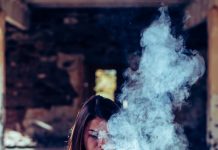My daughter and I colored and decorated hard-boiled Easter eggs until she left home for college. I always attempted to achieve something resembling the Ukrainian Easter eggs (Pysanka), but I was a dismal failure every single time.

The Ukrainian folk art is old ? very old.
“Archeologists have found decorated eggs on a Trypillian excavation site going back to ca. 5500 BC and 2750 BC.”
“In pagan times the cross was an earth symbol, its four arms representing the four cardinal direction. Pysanka tightly relates to the ancient pagan feast, the “Great Day“.

The Ukrainians have taken the Pysanky?art to high form. There are Pysanka on stamps, and they even hold an exalted place in The Ukrainian Museum in New York City.
According to the museum, those who lived long ago developed a myth that the egg was the source of ?life, the sun, and the universe.? Today the Ukrainians are among the very few people who tie ancient traditions with the egg.
“The colors and designs of the intricately designed eggs have ritualistic meanings. The eggs were considered by early people to be ‘a talisman, a protector against evil, as well as harbingers of good.’??

Ukrainians use geometric designs, many with animal and plant references. Some designs have more import.
“The most important motif is the stylized symbol of the sun, which is seen as a broken cross, triangle, an eight point rosette or a star.
“Other popular motifs are endless lines, stylized flowers, leaves, the tree of life and also some animal figures such as stags, horses or birds. The Christian influence brought elements such as the cross, the church and fish.”

The Ukrainians decorate the pysanky with wax and a special stylus (batik). The stylus (kistka?or?ryl’tse?) makes the designs in the wax.
Even the colors that dye the eggs are symbolic.
“Red symbolized the sun, life, joy; yellow stood for wealth and fertility; green was the symbol of spring and plant life. In the not too distant past artisans prepared their own dyes using natural products such as the bark of oak or ash trees, twigs of sour apple trees, saffron or willow tree leaves.
“Today, chemical dyes are used.”

Now people can buy kits. Here is a pysanky pattern if you want to try your hand at it. Just remember to count your eggs before they hatch – I mean, rot. Believe me, you don’t want to find it a month later.

To read more on traditional Easter traditions, check out this article here!





